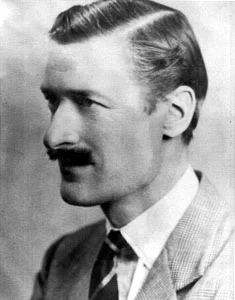IN KENYA’S rush to independence and the rush by non-citizens to return “home” (which they might have visited only intermittently), the pioneers of the colours of the rainbow who remained were shuffled away, sometimes out of sight and sometimes out of memory. There was a kind of reluctance, a sort of unease to celebrate the “colonial, imperialist achievers. Hence, after Uhuru, many of them have been out of sight and out of mind.
As I
focused on the Kenyan leadership, the independent Kenyans and others of the
ilk, I too lost my focus. They were no longer “the” news. Often, they were
mentioned at the bottom of the story, almost out of a kind of guilt by the
writer.
However,
there were never any such qualms when it came to a man like Sir Derek Erskine, who
made his fortune as a grocer and went on to own quite a lot of land. However,
in the new Kenya, there was a place for Sir Derek and his family. He had earned
the respect of almost everyone who mattered, from Jomo Kenyatta, members of the
first Kenya Cabinet and the leaders of the various Asian communities.
Perhaps
his greatest achievement was founding the Kenya Amateur Athletic Association
with Archie Evans in 1951. Archie was also the founding coach of the athletics
team and Sir Derek was the founding chairman of the KAAA. He was also generous
in many ways. He provided financial support when money was scarce. He also
provided land for a football stadium (Nyayo) which I think continues to
flourish to this day.
The
settler who died in 1977, is regarded as one of the pioneers of Kenya’s rich
athletic history alongside the likes of Musembi Mbathi.
Erskine
drafted Kenya’s first athletics constitution the same year and made sure it
reached the recently renamed International Association of Athletics Federation
(IAAF) making it possible for Kenyan runners to compete in major global
championships.
Sir Derek is quoted a saying: …. My wife and I arrived in Mombasa on
October 10, 1927. We both fell in love with Kenya at sight. Everyone seemed so
glad to see us. Nobody had much to give, but what they had was ours. Lord
Delamere told W.C. Hunter & Co. to advance us the money to buy a car, and
later, when my job blew up, he told them to let us off the debt. When we
started our shop at Westlands, a European friend lent us the capital, an Asian
(the late John Suleman Verjee) taught us book-keeping and costings, and a
Kikuyu (Kamau) initiated us into the intricacies of 'service with a smile' at
the counter.
He founded wholesale grocers Erskine and Duncan in 1928. He was a member
of the Legislative Council 1948-51 and 1960-62; President of the Nairobi
Chamber of Commerce 1951-52. He was President of the Nairobi Rotary Club –
from 1939-40
He passed away in September 1977.
Ray Batchelor has gone down in the annals of Kenyan athletics history as the man who
coached Seraphino Antao to gold medal victories in both sprints at the
Commonwealth Games in Perth in 1952. In 1965, he was the unfortunate coach that
was beaten 13-2 by the Ghana All-Stars. I think, President Jomo Kenyatta left
at half-time. It was not Ray’s fault really. He press-ganged into the job when
the original coach threw his arms in the air and left. Kenya did better in the
second match drawing 3-3.
However, Ray’s other big moment of success was
player-coaching the Nakuru All-Stars to win the inaugural premier league
competition. They did it again in 1969.
However, it was in Mombasa and the surrounding
districts Ray will be most remembered for his work with the Mombasa and coastal
football teams and for creating the largest group of outstanding Goan athletes
who will never forget him. Ray passed away many years ago.
Ray (extreme right) with the winning Nakuru All-Stars soccer team
John Velzean was another brilliant athletics
coach who played a huge role in the success of Kenyan athletes all around the
world. Many of the gold medalists, including the great Kipchoge Keino, owe him
a debt of gratitude.
Velzian 60-year career in coaching. He also
did quite a lot of work with the Kenya and club hockey teams. After 1963 he was
one of the few who was asked to stay. Kip Keino once said: “I first met him in
1962 when he was coaching in Nyeri. He was very thorough in his coaching under
the old British system and helped me become the top athlete in the world.”
(AFP)
Velzian was Kenya’s first national athletics team head coach and
went on to become a long-time director of the global governing body’s Regional
Development Centre in Kenya. He played a key role in the bid and organisation
of the 2007 World Athletics Cross Country Championships in Mombasa and had been
the race director for the Nairobi Marathon.
John passed away aged 93 on January 20 2022


.jpg)

Comments